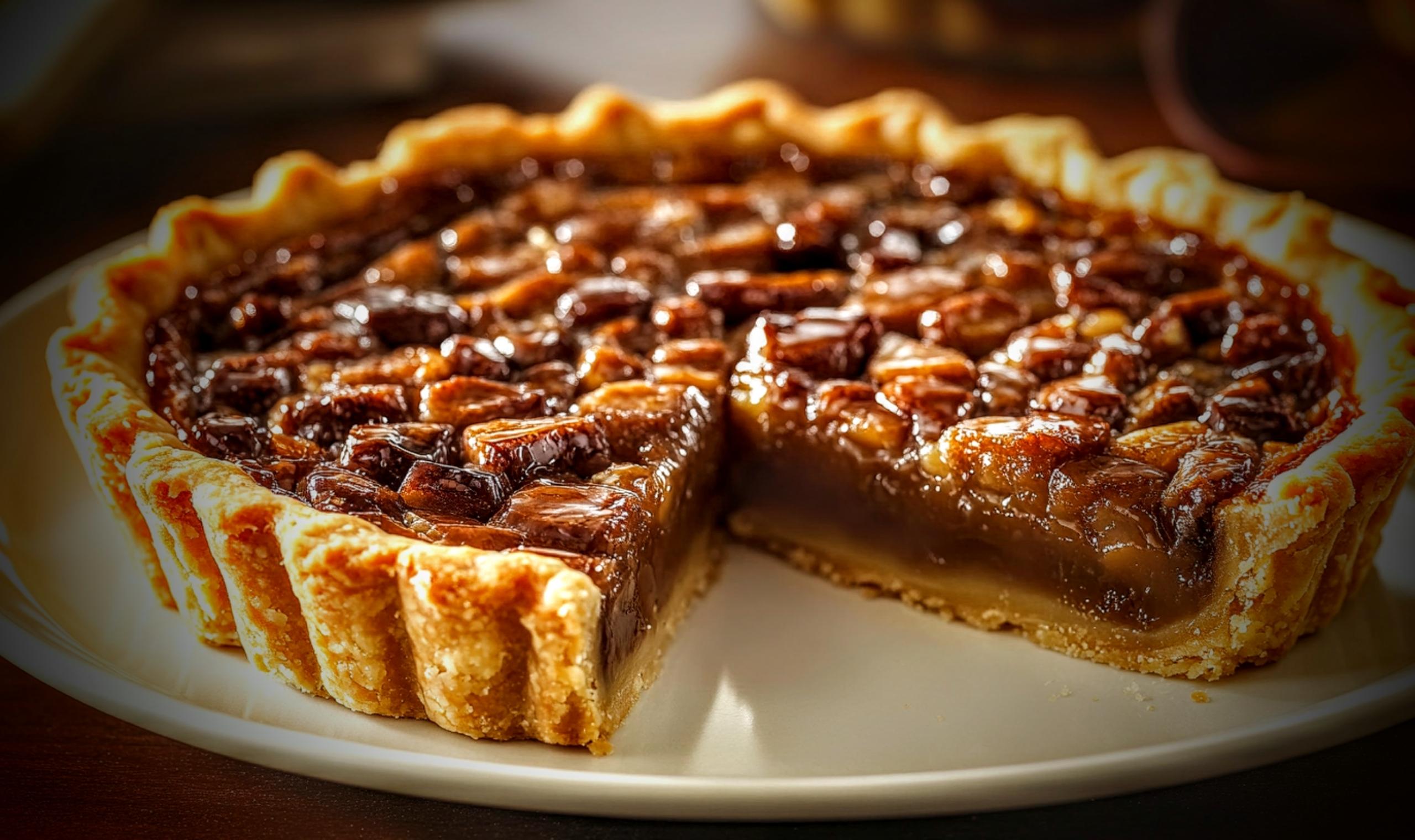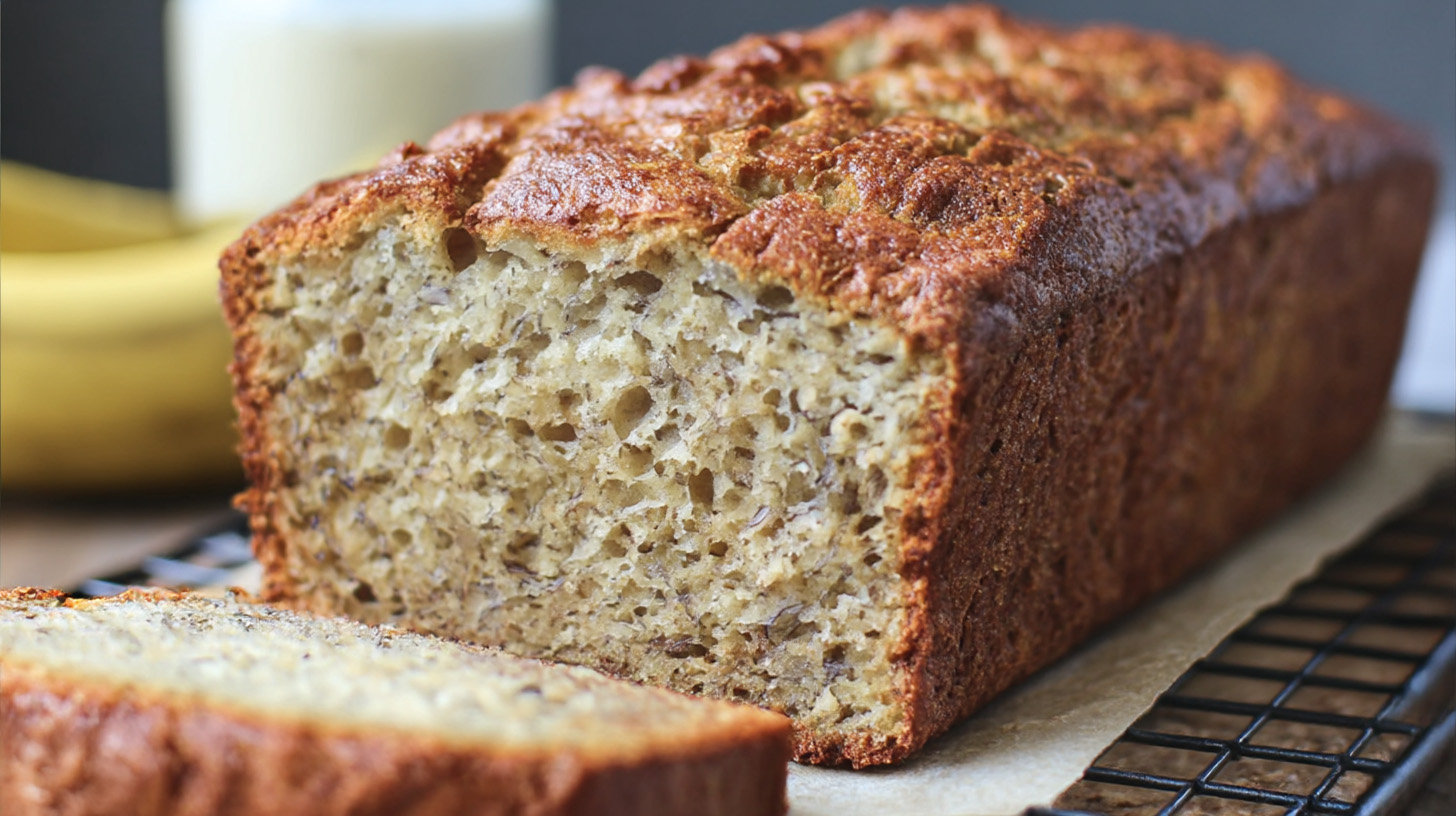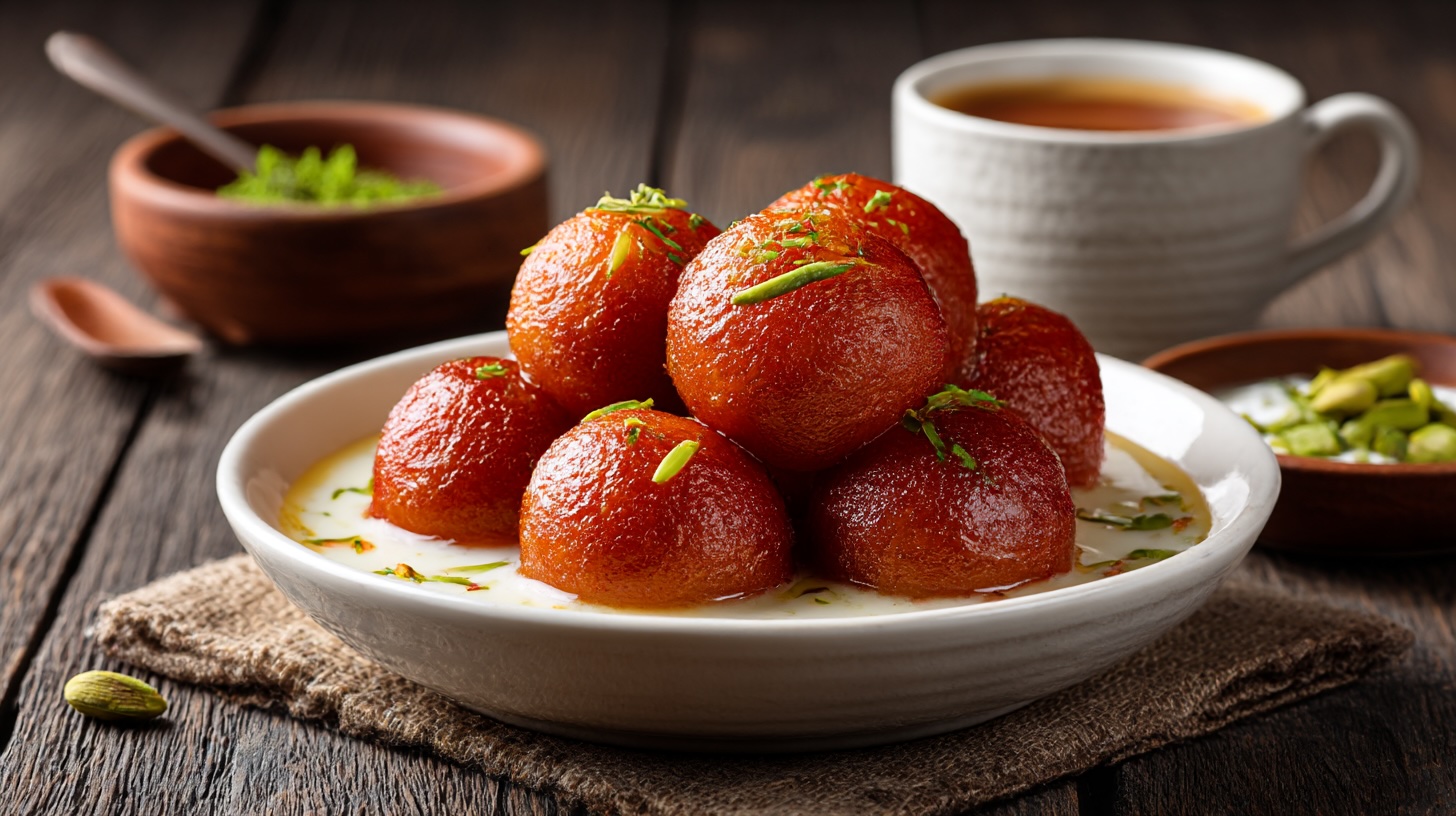Deliciously Canadian: Exploring the Butter Tart Pie
Butter Tart Pie
Butter tart pie is an exquisite dessert that plays a significant role in the rich tapestry of Canadian cuisine. This delightful dessert is a variation of the traditional butter tart, which has historically enjoyed popularity across the country, particularly in Ontario. The butter tart, known for its sweet and gooey filling encased in a flaky pastry, inspired the development of the pie version, which features similar flavors but offers a broader presentation and serves more elegantly at gatherings.
At its core, butter tart pie retains the essential ingredients found in authentic butter tarts, including butter, sugar, and eggs, blending them into a creamy filling that graces the pie crust. Traditionally, the filling may also incorporate maple syrup, adding a distinctly Canadian element and depth to the flavor profile. Variations often employ additional ingredients such as walnuts or raisins, which lend texture and complexity to this beloved treat.
Butter tart pie has become a staple at family gatherings, holiday celebrations, and community events, reflecting not only the culinary heritage of Canada but also its cultural practices of sharing and hospitality. When served warm, the filling offers a delectable blend of sweetness that melts in the mouth, while the crust provides a satisfying crunch, embodying a harmony of flavors and textures. Each bite captures the essence of a well-loved dessert while simultaneously paying homage to its traditional roots.
In this exploration of the butter tart pie, we will delve deeper into its history, evolution, and the reasons for its enduring popularity among dessert enthusiasts, both in Canada and beyond. This beloved confection is indeed a true representation of Canadian culinary artistry, merging nostalgia with modern tastes.
The History Behind Butter Tarts
Butter tarts are a quintessential Canadian dessert, with deep roots in the cultural tapestry of Ontario. The earliest known recipes date back to the 17th century, attributed to French settlers who brought their culinary traditions to North America. These settlers, particularly around the Ontario region, began to create tarts that emphasized sweet, buttery flavors, laying the groundwork for what would become the beloved butter tart. While variations existed, it wasn’t until the 19th century that the butter tart truly established itself as a staple in Canadian cuisine.
The original butter tart recipe typically comprised a simple mixture of butter, sugar, and eggs, combined into a flaky pastry shell. Over time, the recipe evolved, leading to the invention of the butter tart pie, which incorporated variations to suit different tastes and preferences. Raisins, pecans, and even chocolate are now commonly used additions, enhancing the tart’s flavor profile while retaining the traditional charm of its origins. This evolution reflects the adaptability of the butter tart, showcasing the influence of different regions and communities across Canada.
Butter tarts hold a significant cultural status, often associated with family gatherings and special occasions. In Ontario, they are celebrated each year at festivals dedicated entirely to this exquisite treat, further embedding them into the fabric of Canadian traditions. As butter tarts gained popularity, they garnered recognition beyond their regional roots, becoming emblematic of Canadian dessert culture. Today, the butter tart pie stands as a modern tribute to this historical delicacy, highlighting the enduring legacy and evolving nature of this sweet treat.
Key Ingredients for Butter Tart Pie
The butter tart pie, a quintessentially Canadian dessert, is renowned for its rich and gooey filling. To achieve the perfect balance of sweetness and texture in this delightful pastry, several key ingredients must be carefully selected and combined.
First and foremost, brown sugar serves as the backbone of the filling. It provides not only sweetness but also a deep, caramel-like flavor that is essential to the butter tart experience. The moisture content in brown sugar helps ensure the filling maintains a soft and gooey consistency, which is characteristic of a traditional butter tart pie. Combining it with granulated sugar can lend a desirable sweetness while enhancing the overall flavor profile.
Equally important is the butter used in the recipe. The quality of butter plays a crucial role; unsalted butter is often preferred because it allows for greater control over the saltiness of the final product. When melted and combined with the sugar, butter lends a rich creaminess that elevates the indulgent nature of the pie. Moreover, butter contributes to the pie’s smooth texture, making each bite a luxurious experience.
Next, eggs are vital in binding the ingredients together and creating that signature custard-like filling. The eggs should be well-beaten before incorporating them into the mixture to achieve a uniform distribution throughout the pie. They contribute to the pie’s structure, ensuring it sets properly after baking, while adding richness and depth to the flavor.
Finally, the pie crust should not be overlooked, as it serves as the foundation for the butter tart pie. A flaky, buttery crust enhances the overall texture and complements the sweet filling beautifully. Whether made from scratch or purchased, a well-prepared crust is essential for delivering a truly delicious butter tart pie.
The Perfect Pie Crust for Butter Tart Pie
Creating the ideal pie crust for a butter tart pie is fundamental to enhancing the overall experience of this iconic Canadian dessert. The type of crust significantly contributes to the texture and flavor profile, ensuring that it complements the rich, gooey filling that defines a traditional butter tart. There are mainly two popular crust types to consider: flaky crust and shortcrust.
A flaky crust is distinguished by its layers, created through the incorporation of cold fat, generally butter, into the flour. This method results in a tender, airy texture that adds a delightful crunch to each bite. To achieve this, ensure that the butter remains cold throughout the mixing and rolling process. You can cut the butter into the flour using a pastry cutter or your fingertips, being careful not to overwork the dough. A successful flaky crust should have visible bits of butter and should chill in the refrigerator before baking to ensure optimal flakiness.
On the other hand, a shortcrust offers a slightly denser and sweeter taste, making it another excellent option for butter tart pie. This type of crust typically includes sugar in its composition, which not only sweetens the base but also helps achieve a delicate crumb. The preparation is simpler, as the ingredients are mixed until just combined. It is advisable to avoid over-kneading to maintain the short, crumbly texture essential to this crust type.
Regardless of the choice between flaky or shortcrust, the key to the perfect butter tart pie lies in the quality of the ingredients and the method of preparation. Using fresh, high-quality butter, alongside precise measuring techniques, ensures a satisfying crust that harmonizes beautifully with the rich, caramel-like filling typical of butter tarts. Ultimately, experimenting with both types may yield personal preferences, leading to the ultimate butter tart experience.
Making the Butter Tart Filling
The essence of a butter tart pie lies in its delectably gooey filling, making the preparation of this element crucial for a successful dessert. The primary ingredients for the butter tart filling include unsalted butter, granulated sugar, brown sugar, eggs, and vanilla extract. To start, the butter should be softened to room temperature, allowing it to blend smoothly with the sugars. Begin by creaming the softened butter with both types of sugar until the mixture is light and fluffy.
Next, proceed by adding eggs one at a time, ensuring that each egg is fully incorporated before adding the next. Once the eggs are combined, enhance the filling with a splash of vanilla extract, which will provide depth to the flavor profile. It is essential to mix gently at this stage to prevent air bubbles, which can negatively affect the texture of the filling.
As you prepare the filling, it is also crucial to consider common pitfalls. Overmixing the eggs can result in a filling that lacks the desired consistency, while not adequately measuring the ingredients may lead to an unbalanced flavor. It’s beneficial to use a reliable kitchen scale to measure your ingredients, ensuring precision in your recipe.
Moreover, numerous variations can be explored when crafting the filling. For instance, incorporating chopped nuts, dried fruits, or even chocolate chips can add exciting textures and flavors. Some bakers opt for adjusting the ratio of brown to granulated sugar to achieve a more caramel-like taste, while others might experiment with different extracts, such as almond or rum, to amplify the filling’s richness. These personalized tweaks not only enhance the traditional butter tart pie but also reflect individual tastes and creativity.
Baking Tips for a Perfect Butter Tart Pie
Creating a delicious butter tart pie requires careful attention to detail to ensure that the final product is both visually appealing and delectable. To begin with, the temperature settings are crucial. Preheat your oven to 350°F (175°C) before you even think about mixing your ingredients. This ensures that your butter tart pie bakes evenly, resulting in a golden brown crust and a perfectly set filling.
When it comes to timing, most butter tart pies need to bake for approximately 30 to 40 minutes. It is essential to check the pie around the 30-minute mark. The filling should be bubbly and slightly set, but it will continue cooking even after it has been removed from the oven. One effective method to gauge doneness is to gently shake the pie; if the center jiggles slightly but remains mostly firm, it’s ready to come out.
Cooling is another vital component of achieving a perfect butter tart pie. Once you remove it from the oven, allow it to cool on a wire rack for at least two hours. This resting period helps the filling to firm up, making it easier to slice. Serve the pie at room temperature for the best taste experience, though some people enjoy it slightly warm or even cold from the fridge. For added indulgence, consider pairing it with a dollop of whipped cream or a scoop of vanilla ice cream, both of which beautifully complement the rich, buttery flavors of the pie.
In conclusion, mastering the art of baking a butter tart pie involves careful consideration of various factors, including temperature, timing, and cooling. Following these expert tips will undoubtedly lead to a delightful dessert that showcases the best of Canadian culinary traditions.
Variations and Creative Twists
The traditional butter tart pie, while beloved in its classic form, opens a world of possibilities for those inclined to experiment with fillings, crusts, and toppings. One of the most popular adaptations is the inclusion of chocolate, which adds a rich, decadent twist to the original recipe. Simply incorporate chocolate chips into the filling, or consider creating a chocolate ganache layer beneath the buttery filling for an indulgent butter tart pie. This fusion not only enhances the flavor but also introduces a pleasing texture contrast that many find irresistible.
Another exciting variation is the addition of nuts. Pecans, walnuts, or even macadamia nuts can provide a delightful crunch and an earthy flavor profile that complements the sweet, gooey filling. In fact, a classic pecan butter tart pie combines the signature buttery filling with toasted pecans, resulting in a unique blend of textures and tastes. Furthermore, consider adding a hint of spice, such as cinnamon or nutmeg, to the filling, enriching the overall flavor experience.
The crust is another area ripe for creativity. While a traditional pastry crust is the most common, one might explore alternatives like graham cracker crusts or even a chocolate cookie crust. These variations can impart distinct flavors and add an extra element of enjoyment to the butter tart pie. As for toppings, whipped cream or a scoop of vanilla ice cream can elevate this dessert, while a drizzle of caramel sauce adds an extra layer of sweetness. When paired with fresh fruits like strawberries or raspberries, the result is not only visually appealing but also a refreshing contrast to the rich filling. By encouraging kitchen experimentation, many can find their perfect rendition of the much-loved butter tart pie.
Serving Suggestions and Pairings
Butter tart pie, a quintessential Canadian dessert, offers a rich and indulgent experience that can be further enhanced by thoughtful serving suggestions and pairings. The sweet and gooey filling of the butter tart pie makes it an ideal candidate for a variety of accompaniments that add an interesting contrast in texture and flavor. One popular option is to serve the pie warm, accompanied by a generous scoop of vanilla ice cream. The creamy, cold ice cream juxtaposes beautifully with the warm pie, creating a delightful temperature contrast that is sure to please the palate.
Another excellent pairing is the classic whipped cream. Adding a dollop of lightly sweetened whipped cream on top of a slice of butter tart pie adds a fluffy texture, which complements the rich, sticky filling. For those looking to incorporate a fruity element, fresh berries, such as raspberries or blueberries, can introduce a slight tartness that beautifully balances the sweetness of the pie.
When it comes to beverages, coffee is a timeless companion for butter tart pie. The robust flavor of a freshly brewed cup of coffee not only helps to cut through the richness of the pie but also elevates the overall dining experience. Alternatively, dessert wines such as ice wine or late-harvest Riesling can provide a sophisticated pairing. These wines typically exhibit flavors of stone fruits and honey, which harmonize well with the caramel undertones of the butter tart pie.
For those wanting to experiment with flavors, a spiced chai or a creamy cappuccino could also serve as a delightful accompaniment to this beloved Canadian treat. Overall, the enjoyment of butter tart pie can be significantly enhanced through these carefully selected serving suggestions and pairings, ensuring a memorable dessert experience.
The Timeless Appeal of Butter Tart Pie
The butter tart pie holds a unique and cherished position within Canadian cuisine, resonating deeply within cultural celebrations and family traditions. This delightful dessert, characterized by its sweet, buttery filling nestled in a flaky crust, is often associated with cherished memories and joyous occasions. From community events to holiday festivities, the presence of a butter tart pie can turn a gathering into a memorable culinary experience, evoking nostalgia and warmth.
The joy of baking butter tart pie is an experience that transcends generations, often passed down through family recipes. Each butter tart pie carries a story, whether it is the secret ingredients or the specific way it is prepared. As families gather to bake, they not only engage in a time-honored tradition but also create bonds that are fortified with shared laughter and love. This reinforces the pie’s status as a staple in Canadian households, cherished for its flavor but even more so for the memories associated with its preparation and enjoyment.
At holiday gatherings and special occasions, butter tart pie emerges as a delightful centerpiece, often prompting lively conversations and a sense of togetherness. It is a dessert that encourages sharing; one pie can become a source of joy for many, symbolizing generosity and community spirit. The butter tart pie is much more than just a dessert; it represents a piece of Canadian identity that continues to thrive and evolve, standing the test of time.
In conclusion, the timeless appeal of butter tart pie lies not only in its delightful taste but also in its ability to bring people together. Its significance in Canadian culture is marked by the joy it brings to both the baker and the consumer. Celebrating this classic dessert allows Canadians to honor cherished traditions while creating new memories, ensuring that the butter tart pie will remain a beloved fixture in kitchens and hearts for generations to come.




Post Comment